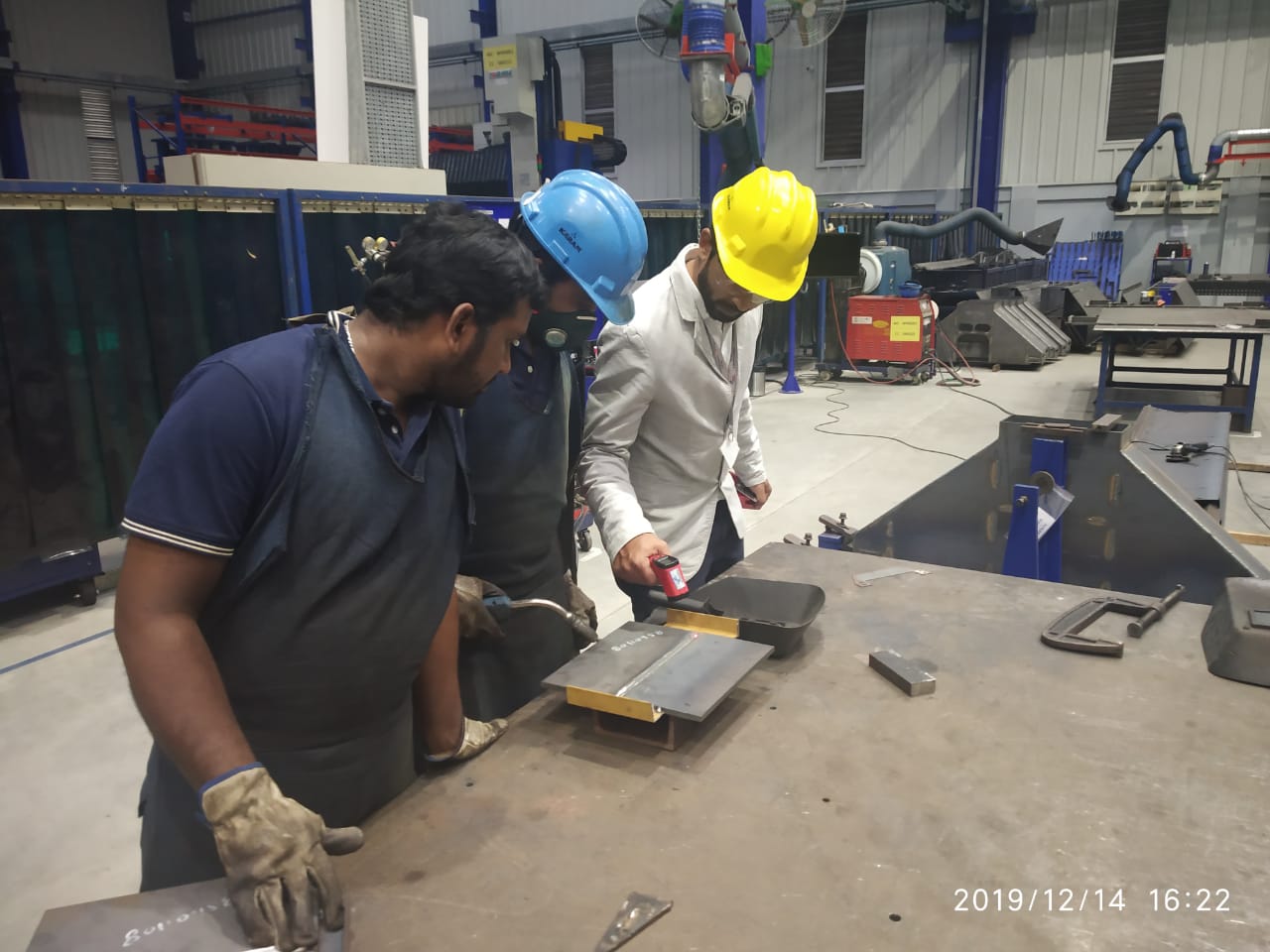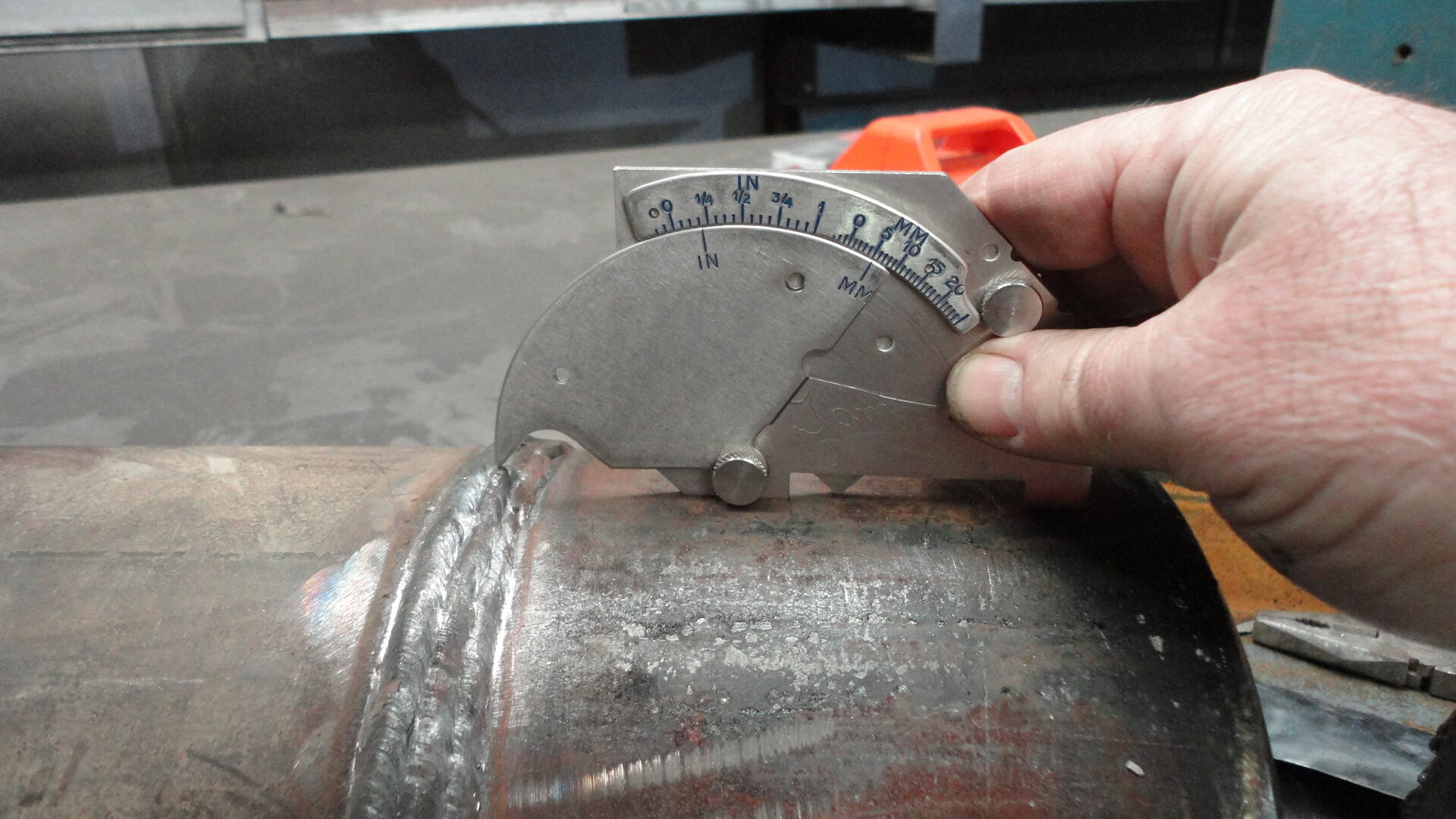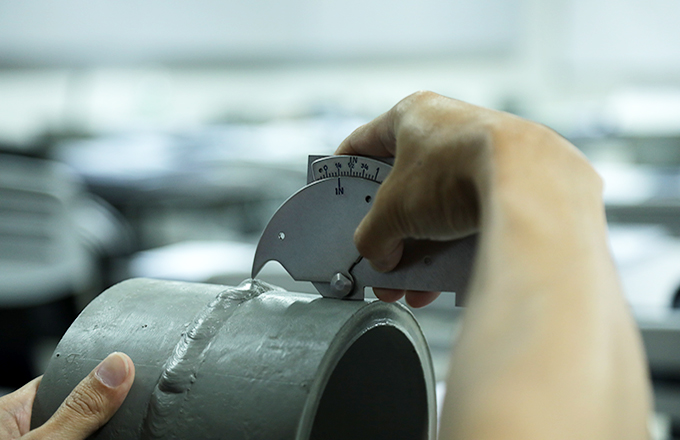A Comprehensive Guide to Welding Inspection Madison Requirements
A Comprehensive Guide to Welding Inspection Madison Requirements
Blog Article
Just How Efficient Welding Evaluation Boosts Structural Honesty and Durability
In the world of building and design, the value of welding examination can not be overstated, as it plays a critical function in making sure architectural integrity and expanding the life expectancy of tasks. By releasing a series of sophisticated evaluation strategies, such as radiographic and ultrasonic screening, specialists can pinpoint problems that could endanger the integrity of a structure. The concern stays: how do these thorough procedures equate into tangible advantages for toughness and safety and security? Join the exploration of just how reliable welding evaluations can transform prospective susceptabilities right into toughness, adding to the enduring success of buildings.
Value of Welding Evaluation
Making certain the architectural integrity and security of bonded building and constructions mandates strenuous welding evaluation processes. Welding assessment serves as a critical guard in the building and construction and production sectors, where the toughness and resilience of joints dramatically influence the general efficiency of frameworks.
In enhancement to security, welding assessment plays an important role in quality guarantee. By sticking to fixed standards, assessments establish the consistency of welds, ensuring that each fulfills the preferred strength and visual demands. This consistency is essential not just for security but also for maintaining the reputation and integrity of manufacturers and makers. Regulative conformity is a substantial motorist of welding evaluation practices. Sector criteria and codes, such as those from the American Welding Culture (AWS) or the International Company for Standardization (ISO), require adherence to rigorous standards, highlighting the value of assessments in meeting these professional and legal obligations.
Key Evaluation Methods

Ultrasonic Examining (UT) utilizes high-frequency acoustic waves to detect subsurface imperfections, using exact details regarding weld stability without triggering any damage. Radiographic Evaluating (RT), entailing X-rays or gamma rays, supplies a thorough photo of the weld's inner structure, disclosing concealed flaws. Magnetic Particle Checking (MPT) is one more non-destructive approach, specifically reliable for discovering surface and near-surface gaps in ferromagnetic products.
Penetrant Screening (PT) involves the application of a liquid dye to expose surface-breaking flaws, using a affordable and straightforward service for non-porous materials. Each technique has its specific applications, staminas, and restrictions, and usually a combination of approaches is used to achieve comprehensive examination results. Proficiency of these techniques boosts the dependability and sturdiness of welded structures, aligning with security and efficiency expectations.
Identifying Common Problems

Porosity, defined by gas pockets within the weld, reduces the weld's toughness and toughness. Cracks, discover this which can happen throughout or after welding, pose considerable dangers due to their possible to circulate under stress.
Insufficient blend, where the weld metal stops working to bond totally with the base product, undermines the architectural stability, leading to weak joints. This flaw usually comes from inadequate heat input or inappropriate welding technique. Slag inclusions occur when non-metallic products are caught in the weld, compromising its toughness and quality. These are typically an outcome of insufficient cleaning in between weld passes or incorrect flux usage.
Determining these flaws via precise inspection techniques, such as visual assessment, ultrasonic screening, or radiography, is essential. Resolving these worries guarantees weld top quality, inevitably sustaining the structural integrity and safety and security of the built setting.

Enhancing Architectural Efficiency
Recognizing the value of identifying usual weld defects normally leads to exploring methods for improving architectural efficiency. The fundamental method for enhancing efficiency requires employing innovative welding methods and products that reduce defect incident. Utilizing high-grade filler products and making sure appropriate warmth control can considerably lower concerns such as porosity and splitting, consequently boosting the weld's integrity.
Integrating modern welding technologies, such as laser welding and friction mix welding, further amplifies architectural resilience. These techniques provide exceptional precision and reduced thermal distortion, directly influencing the toughness and stamina of the welded structures. Embracing automated welding systems can make certain repeatable and consistent weld quality, reducing human mistake.
Additionally, carrying out extensive pre-weld and post-weld treatments is essential. Proper joint style, surface area prep work, and stress-relieving processes add to optimal weld efficiency. Performing complete pre-weld inspections enables for early discovery of potential problems, facilitating timely modifications prior to they compromise the structure.
Lasting Benefits of Inspection

With alert evaluation practices, the long-term benefits to architectural why not check here stability become increasingly evident. Constant and extensive welding assessments play a critical function in avoiding structural failures by recognizing variances and problems early in the construction process. This positive technique ensures that prospective concerns are dealt with prior to they can endanger the security and toughness of structures. By catching flaws early, pricey fixings and downtime are reduced, eventually prolonging the lifespan of the framework.
Moreover, routine inspections add to maintaining compliance with sector criteria and policies, consequently avoiding financial and legal effects. This adherence to quality control not only enhances the reliability of the structure but also fosters count on amongst stakeholders, consisting of customers, engineers, and governing bodies. The detailed documents of evaluation end results serves as an important resource for future maintenance and repair work initiatives, promoting educated decision-making.
Furthermore, reliable inspection techniques support innovation by integrating advanced technologies such as non-destructive screening and electronic imaging, which can enhance precision and performance. This technical assimilation better highlights the commitment to quality in structural stability. Eventually, purchasing precise welding inspections is a sensible approach that produces considerable lasting advantages, safeguarding both the financial and physical investment in facilities tasks.
Conclusion
Reliable welding assessment plays a critical function in enhancing structural integrity and durability by identifying problems early in the building procedure. Using techniques such as visual assessment, ultrasonic testing, and radiographic screening guarantees the discovery of issues like fractures and porosity that jeopardize weld stamina. Rigorous inspections make sure compliance with market standards, thus prolonging the life-span of frameworks, decreasing pricey fixings, and fostering stakeholder count on the reliability and safety of welded building and constructions.
In the realm of building and design, the relevance of welding evaluation can not be overstated, as it plays an essential duty in ensuring structural integrity and prolonging the life expectancy of tasks.Ensuring Check This Out the structural integrity and security of welded buildings requireds strenuous welding examination processes.Building upon the importance of welding assessment in guarding structural integrity, understanding the key evaluation methods becomes imperative for effective implementation. Effective welding inspection encompasses a variety of approaches developed to examine weld high quality, making sure compliance with strict engineering standards - Welding Inspection Madison.Effective welding inspection plays an important duty in improving structural integrity and long life by recognizing issues early in the construction process
Report this page